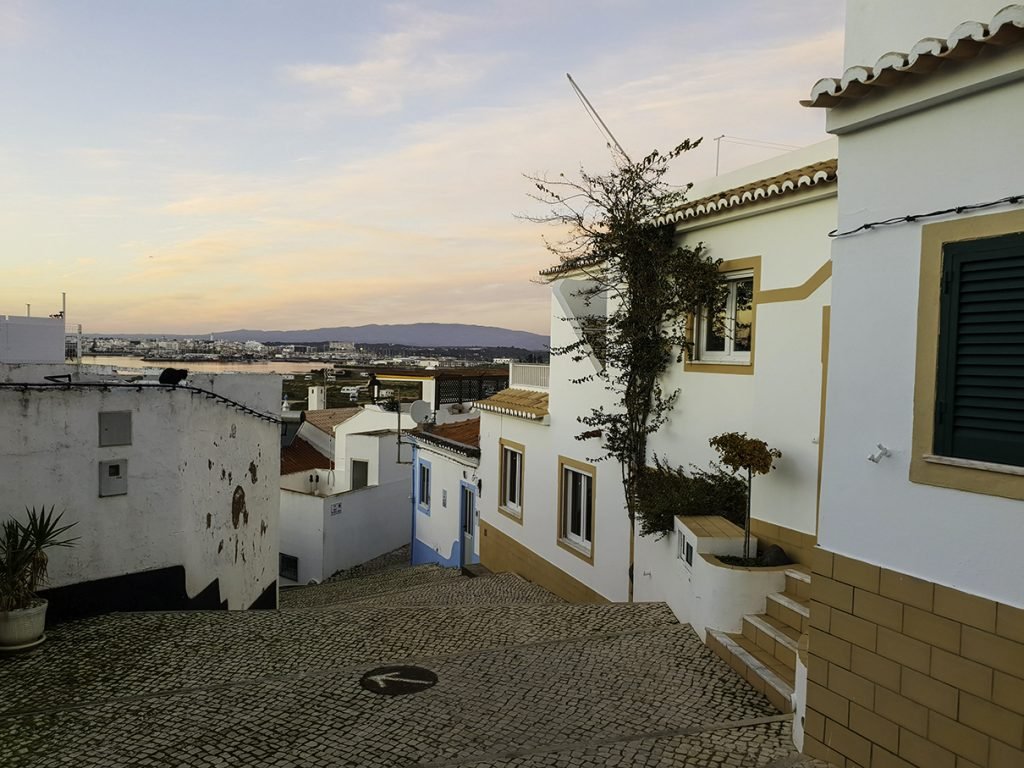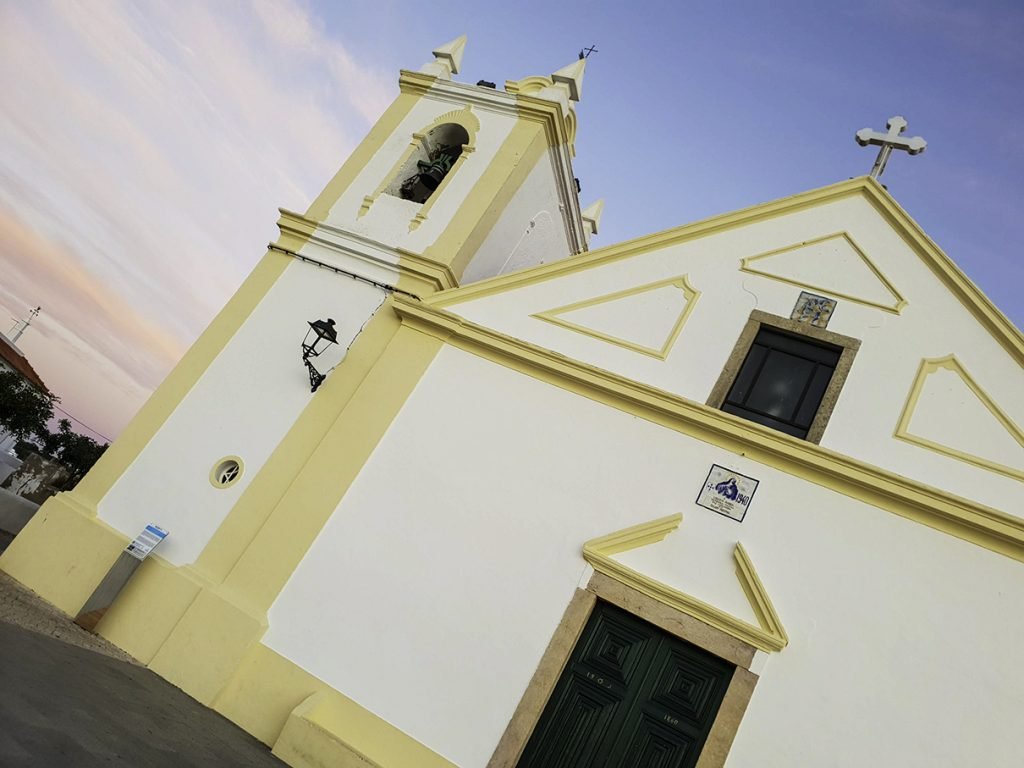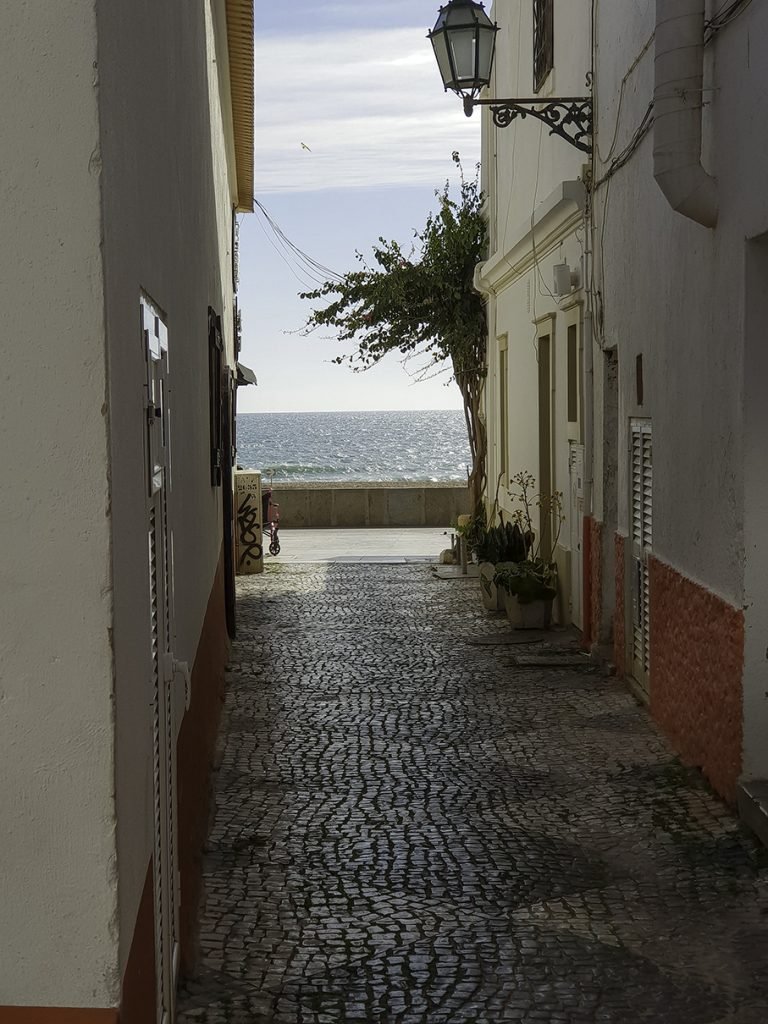As soon as we leave Portimão and cross the Arade River, we find a completely different town that has not yet been “invaded” by mass tourism, as other places have been. Ferragudo is one of those fishing villages that retains a more authentic Algarve spirit and although the centre is full of restaurants and bars, there are no large buildings or large hotels. Both Praia da Angrinha and Praia Grande are ideal for children because these two beaches are still located at the mouth of the Arade River and, with the construction of the pier, where the Portimão lighthouse is located, they are almost embedded in the landscape, without major waves.

In Ferragudo, I would like to highlight some picturesque streets with little white houses and the typical lace chimneys at the top of the town, but the two highlights are the Church of Nossa Senhora da Conceição and its churchyard from where you can see the sea, the Arade River and the Portimão marina; and the Fort of São João do Arade, which was a defence of the Arade River estuary, whose construction began in the 15th century and underwent successive alterations in the 17th and 18th centuries and is now private property.




Between Ferragudo and Albufeira, the coast is extremely rugged, only occasionally revealing beaches in the numerous coves that the sea has carved out there. There are many beaches in this area, but the best-known are Carvoeiro, Benagil, Marinha, Nossa Senhora da Rocha and Armação de Pera, the latter better known for being a larger town than for the beach itself. In this stretch, the National Road 125, which I have already mentioned in recent articles, is further from the coast and it is impossible to travel close to the sea. Even so, between Ferragudo and Carvoeiro, through the hundreds of houses with swimming pools in the area, we can travel along small roads that take us to Carvoeiro, a well-known village that is popular with holidaymakers, both national and foreign. It is located at the bottom of two ravines, almost in a valley, where everything is a bit cramped, but at the end you will find the beach that makes up for it with its beauty. It is nestled between two hills, so it is more sheltered from the wind and has less strong waves, and is also very popular for water sports. Carvoeiro is an old fishing village that is certainly worth a visit, but I will take the N124-1 road towards Lagoa to continue on my way.

In Lagoa we want to take the N125 again. Very close by is the Slide & Splash – a water park, if that’s your thing it’s interesting – if not we continue and 8km later, in Alcantarilha, we have another water park called Aqualand Algarve. But it is on this 8km stretch that we have beautiful beaches, luxury resorts and many villas that paint the landscape. Access to the beaches is a little restricted because there is a road that reaches the coast, but to continue the journey we almost always have to return to the 125. And it is precisely here on the coast that a larger city appears – Armação de Pera – which from an architectural point of view does not attract much interest, being more of a jumble of buildings, but which has a large and very popular beach.

The next stretch between Quarteira and Albufeira is very winding with houses, hotels and some resorts luxury hotels. The coast is quite indented here and some beaches are almost exclusive to hotels because they are very difficult to access (although in practice there are no private beaches in Portugal, so they are public).
Albufeira: the capital of fun
In Guia, we turn off onto the M526 road and enter the city of Albufeira via the marina. It is a city of some size, although it started out as a fishing village with white houses that overlook a hillside and culminate in Praia dos Pescadores, the main and best-known beach in Albufeira. Much frequented by the English (who never get the pronunciation of the name Albufeira right!), the city is one of the most popular tourist destinations and the largest resort in Portugal. The administrative area of the Albufeira council is extensive and extends from Praia dos Salgados to the western part of Vilamoura, all of which has many hotels along the coast that are bustling in the summer with tourists, especially from northern Europe.


Albufeira’s history dates back to Roman times 2,000 years ago, and was later conquered by the Arabs, who called it Al-Buhar (the castle in the sea), when it became a city with links to trade with North Africa. In the 13th century, it was taken over by the Knights of Santiago, and burned down in 1833 during the Liberal Wars, before seeing its decline as a trading city and becoming a fishing village. The city itself doesn’t have much to see, but the centre is where you’ll find the pedestrian streets and the hustle and bustle of restaurants, bars and nightlife.
The Albufeira coastline is very popular for water sports, from sailing to water skiing, including windsurf and diving. On land there are also plenty of golf courses, which are one of the Algarve's calling cards, especially when the weather is not so good for the beach, but good enough for a swim. birdie. The best-known beaches in the area are Praia da Oura, Santa Eulália, Maria Luísa, Olhos de Água and Praia da Falésia, which extends almost to Vilamoura. Still in the municipality of Albufeira, but further inland, on road 125, the following stand out: Zoomarine Very popular among locals and foreigners, it is a theme park that combines several attractions, from water amusement areas to shows with dolphins and birds. The price is high, so expect to stay all day, but if you buy your ticket online you get a 10% discount. Right next door there is another point of interest for those who like shopping with Algarve Shopping. For a long time the Algarve was far from large shopping areas and even now only two or three stand out, but if you are in the area and want to do some shopping in international stores then this is a good opportunity to stroll around here.
Read the article here to know the Algarve. In this other article you will get to know the wildest part of the Algarve, the Vicentine Coast. And here is the first part of the Windward.